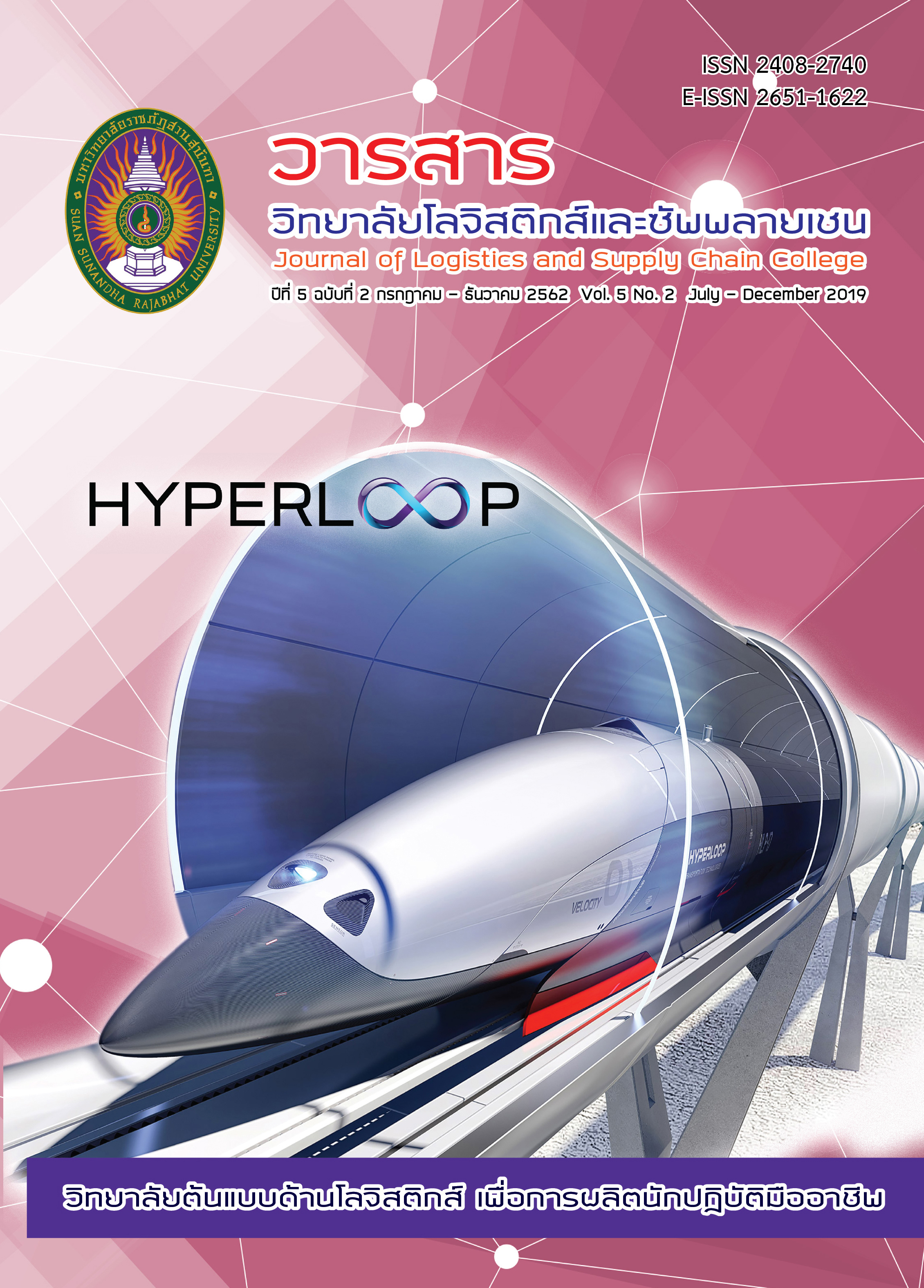Waste from Information Flow under Supply Chain in Production Process of Rubber Smoked Sheets and Rubber Smoked Sheets Bale: A Case Study of Farmer Institutions in Southern Region
Abstract
Information Flow is delayed from start to the end of process under Supply Chain, then are waste. The purpose of this research is to, 1) Study relationship element of information under Supply Chain in the production of rubber smoked sheets and rubber smoked sheet bale. 2) Study information flow under the supply chain in the production of rubber smoked sheets and rubber smoked sheet bale. 3) Include analysis waste of Information Flow under
Supply Chain in the production of rubber smoked sheets and rubber smoked sheet bale. The researched by qualitative research using in-depth interview with 20 informants of a farmer institution that has certified good practice standards for smoked rubber sheet production in the southern region of Thailand. Analysis by program ATLAS.ti version 7.5.18 and design map IDEF include analysis waste from production. 1) The study found relationship element of
information such as importing is a part of activity, relationship with standard and controller, and That is requirements of activity. So labor, equipment and machine have to relation with labor’s expert skill in activity, they can used equipment and machine. 2) The study information
flow under supply chain found the production of rubber smoked sheets and rubber smoked sheet bale start from the collector transfer data to the recorder, and then flow to the labor for produce is middle activity. And the labor transfer data to seller and customer in the end production. 3) The analysis waste from Information Flow found the production of rubber smoked sheet is waste and not benefit, getting field latex and stocking rubber smoked sheets
for export, and found the production of rubber smoked sheet bale is waste and not benefit but they have to do with collecting, forming and stocking rubber smoked sheet bale. The result is Policy Recommendation for management the production of rubber smoked sheets and rubber smoked sheet bale to more efficient.
References
ขวัญเรือน สินณรงค์ และ ชยากร พุทธกำเนิด. (2562). การจัดทำฐานข้อมูลและระบบสารสนเทศในการจัดเก็บค่าธรรมเนียมขยะกรณีศึกษา: เทศบาลตำบลบ้านดู่ อ.เมือง จ.เชียงราย. วารสํารวิทยาลัยโลจิสติกส์และซัพพลายเชน, 5(1), 37-38.
ธันยธร ติณภพ. (2559). การจัดการห่วงโซ่อุปทานโดยวิสาหกิจชุมชนผลิตข้าวอินทรีย์ในเขตภาคกลางของประเทศไทย. วารสารวิจัยและพัฒนาวไลยอลงกรณ์ ในพระบรมราชูปถัมภ์, 11(3), 317-330.
นิภาวรรณ กุลสุวรรณ และ พชร อภิชยารักษ์. (2561). การประยุกต์ใช้แผนภาพการไหลของข้อมูลเพื่อการจัดการข้อมูลในหน่วยงานประปา: กรณีศึกษามหาวิทยาลัยเกษตรศาสตร์ วิทยาเขตกำแพงแสน. Naresuan University Engineering Journal, 13(1), 11-24.
ประดิษฐ์ วงศ์มณีรุ่ง สมเจตน์ เพิ่มพูนธัญญะ พรเทพ เหลือทรัพย์สุข และ นพดล อิ่มเอม. (2552). 1-2-3 ก้ําวสู่ลีน.กรุงเทพฯ: สมาคมส่งเสริมเทคโนโลยี (ไทย-ญี่ปุ่น).
ไพศาล ลาภสมบูรณ์ชัย และ ณัฏฐพันธ์ เขจรนันทน์. (2558). การลดความสูญเปล่าในกระบวนการบรรจุหอมหัวใหญ่ โดยเทคนิคการผลิตแบบโตโยต้า: ศึกษาโรงงานถาวรการเกษตร. วํารสํารสุทธิปริทัศน์, 29(92), 218-235.
สุชาดี ธำรงสุข, วันชัย แหลมหลักสกุล และ สมนึก วิสุทธิแพทย์. (2559). การลดความสูญเปล่าใน กระบวนการผลิตของโรงงานผลิตเครื่องปรับอากาศ. Journal of King Mongkut’s University of Technology North Bangkok, 26(3), 451-461.
สำนักงานเศรษฐกิจการเกษตร. (2561). รายงานสภาวะอุตสาหกรรมผลิตภัณฑ์ยํางและไม้ยางพารา รายปี 2561. หน้า 1-4.
Bouchlaghem D., Kimmance, G. A., & Anumba, J. C. (2004). Integrating product and process information in the construction sector. Industrial Management & Data Systems, 104(3), 218-233.
Christopher, M., & Gattorna, J. (2005). Supply Chain Cost Management and Value-based Pricing. Industrial marketing management, 34(2), 115-121.
Faller, C., & Feldmüller, D. (2015). Industry 4.0 learning factory for regional SMEs. Procedia Cirp,32, 88-91.
Mirkovski, K., Lowry, P. B., & Feng, B. (2016). Factors that influence interorganizational use of information and communications technology in relationship-based supply chains: evidence from the Macedonian and American wine industries. Supply Chain Management: An International Journal, 21(3), 334-351.
Nieto, M. J., & Fernandez, Z. (2005). The role of information technology in corporate strategy of small and medium enterprises. Journal of International Entrepreneurship, 3(4), 251-262.
Stevens, G. C., & Johnson, M. (2016). “Integrating the Supply Chain ... 25 years on”. International Journal of Physical Distribution & Logistics Management, 46(1), 19-42.



